Introduction
Effective cost control is the cornerstone of survival and growth for small to medium businesses (SMBs) in today's competitive markets. This article will delve into the critical aspects of managing and reducing expenses while maintaining operational efficiency and quality. By exploring methods to identify fixed and variable costs, implementing sustainable cost-cutting measures, and leveraging innovative technology solutions, it aims to provide CFOs with practical guidance for optimizing financial performance.
Moreover, it highlights the importance of strategic vendor management, employee involvement, and continuous improvement to ensure long-term savings and alignment with business goals.
Understanding Cost Control
Efficient expense management is crucial for small to medium enterprises (SMEs) seeking to thrive and expand in competitive markets. This process involves managing and reducing expenses while maintaining efficiency and quality. Identifying fixed and variable costs, as well as direct and indirect costs, allows businesses to pinpoint areas for potential savings without compromising performance. Practicality and efficiency are essential when executing cost-reduction strategies. Each action should enhance or sustain operational efficiency, ensuring that reductions do not adversely affect the core operations. 'Additionally, these actions should be sustainable and offer long-lasting savings instead of immediate benefits.'. Incorporating innovative technology solutions can help reduce costs without affecting quality of operations, aligning with both financial and operational goals. 'Eco-friendly measures not only lead to savings but also support social responsibility objectives, enhancing the organization's reputation.'. Ultimately, the goal is to adopt cost-cutting strategies that are effective and supportive of the business's overall goals and values.
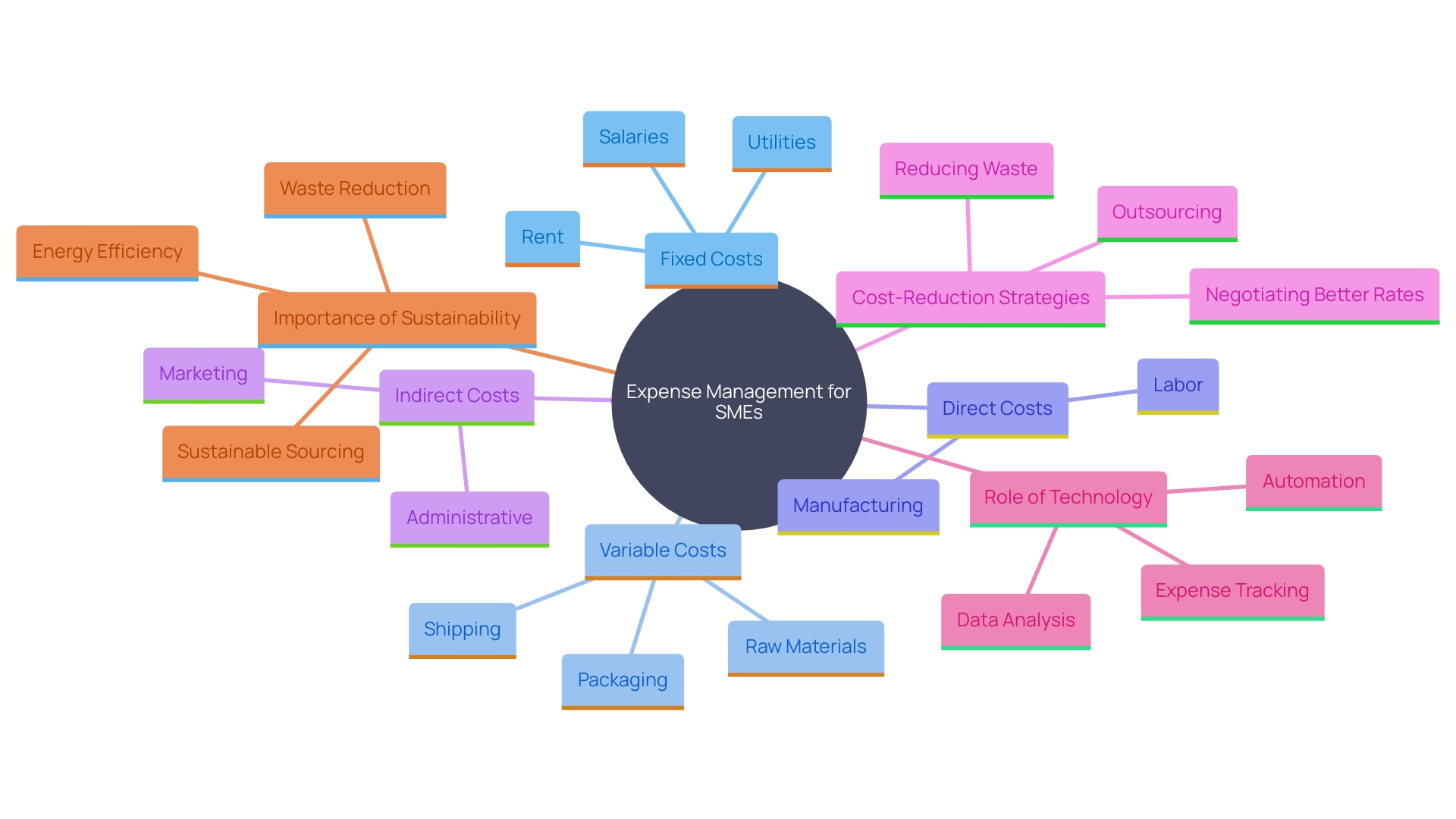
Creating an Effective Cost Control Strategy
An effective expense management strategy begins with a comprehensive assessment of current expenditures. This involves meticulously analyzing spending patterns, budgeting forecasts, and identifying expense drivers. SMBs should define clear objectives, such as reducing operational costs by a specific percentage or improving profit margins. Applying economic performance indicators enables organizations to monitor advancement and modify tactics as needed.
A well-defined budget is crucial, serving as a reflection of the company’s goals, priorities, and expected income and expenses. Understanding cash flow—the lifeblood of any small business—is essential. It involves tracking the money coming in and going out to ensure the entity can cover its expenses and grow. Using a budget template can streamline this process by offering a clear structure for arranging monetary information and making knowledgeable choices.
To drive growth and profitability, SMBs should embrace strategic and operational changes. This includes enhancing asset utilization and understanding the effect of leverage on performance. Financial management tools such as income statements, balance sheets, and cash flow statements are invaluable in this process. They assist in converting business concepts into reasonable fiscal forecasts, addressing procurement, allocation, return on investment, and cash management.
Gaining insights from case studies and real-world instances of data analysis, like those related to large-scale web-based information, can provide practical lessons in effective resource management. Steps like data cleaning, analysis, and visualization are crucial in understanding and optimizing performance metrics related to finances.
Moreover, keeping an eye on grant opportunities from government entities, foundations, and corporations can provide additional financial support. These grants often focus on specific industries, regions, or initiatives, such as green technology or innovation. 'Customizing proposals to align with organizational objectives and operational scope can unlock significant benefits, helping to improve operational efficiency and expand service capabilities.'.
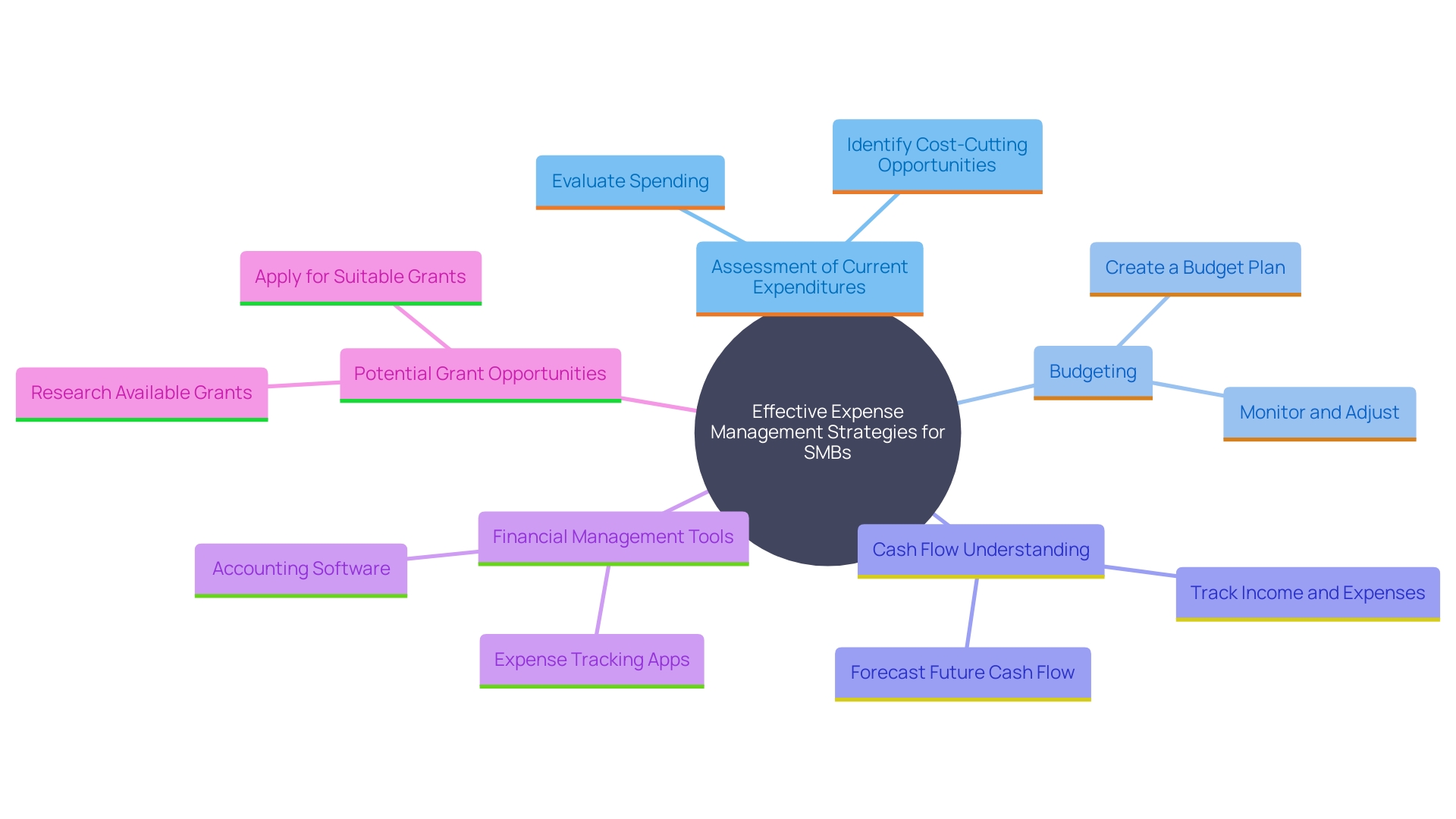
Implementing Cost Control Measures
SMBs can implement expense control measures effectively by tightening procurement processes, renegotiating supplier contracts, and optimizing inventory management. Adopting these strategies can significantly reduce expenses without compromising on quality or compliance. Emphasizing automation in routine tasks can also yield considerable savings by reducing manual labor and improving efficiency.
For example, using financial accounting software can assist in monitoring expenditures in real-time and producing comprehensive financial statements, enabling organizations to manage their spending effectively. Investing in training for the team to understand and apply cost accounting principles is crucial. This includes managers and decision-makers who can benefit from cost-related insights to optimize operations.
A grant for a vehicle can significantly benefit small enterprises by improving operational efficiency and expanding service capabilities, as noted in recent news. This financial assistance aids companies in expanding, boosting income, and more effectively addressing customer requirements.
Incorporating eco-friendly cost-cutting measures can also lead to savings and align with social responsibility goals, supporting overall business objectives. By applying these strategies, SMBs can effectively manage their finances, ensure compliance, and balance long-term goals with short-term needs.
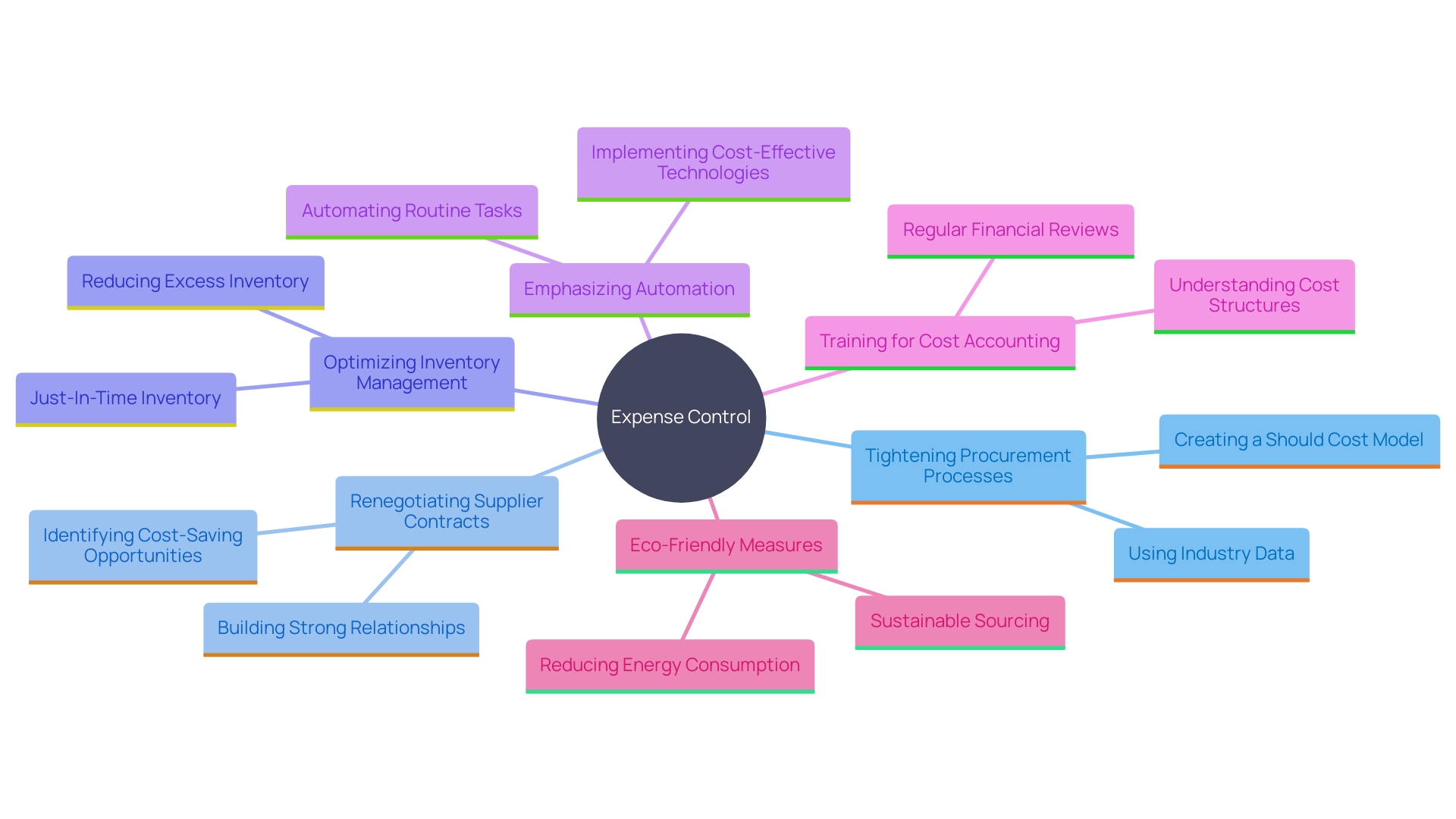
Vendor Management and Negotiation
Effective vendor management is essential for strong expenditure control in SMBs. Regularly evaluating supplier relationships to ensure optimal terms is a strategic necessity. This encompasses negotiating prices, exploring bulk purchase discounts, and considering alternative suppliers. Leveraging data-driven negotiations can illuminate areas where suppliers may be quoting more than fair prices, transforming procurement from a transactional function into a strategic powerhouse. Building strong vendor partnerships not only fosters more favorable conditions but also enhances operational efficiency. Tracking service issues and usage history provides a structured approach for consistency, enabling SMBs to benchmark against service issues and usage trends, ultimately driving value and innovation throughout the organization.
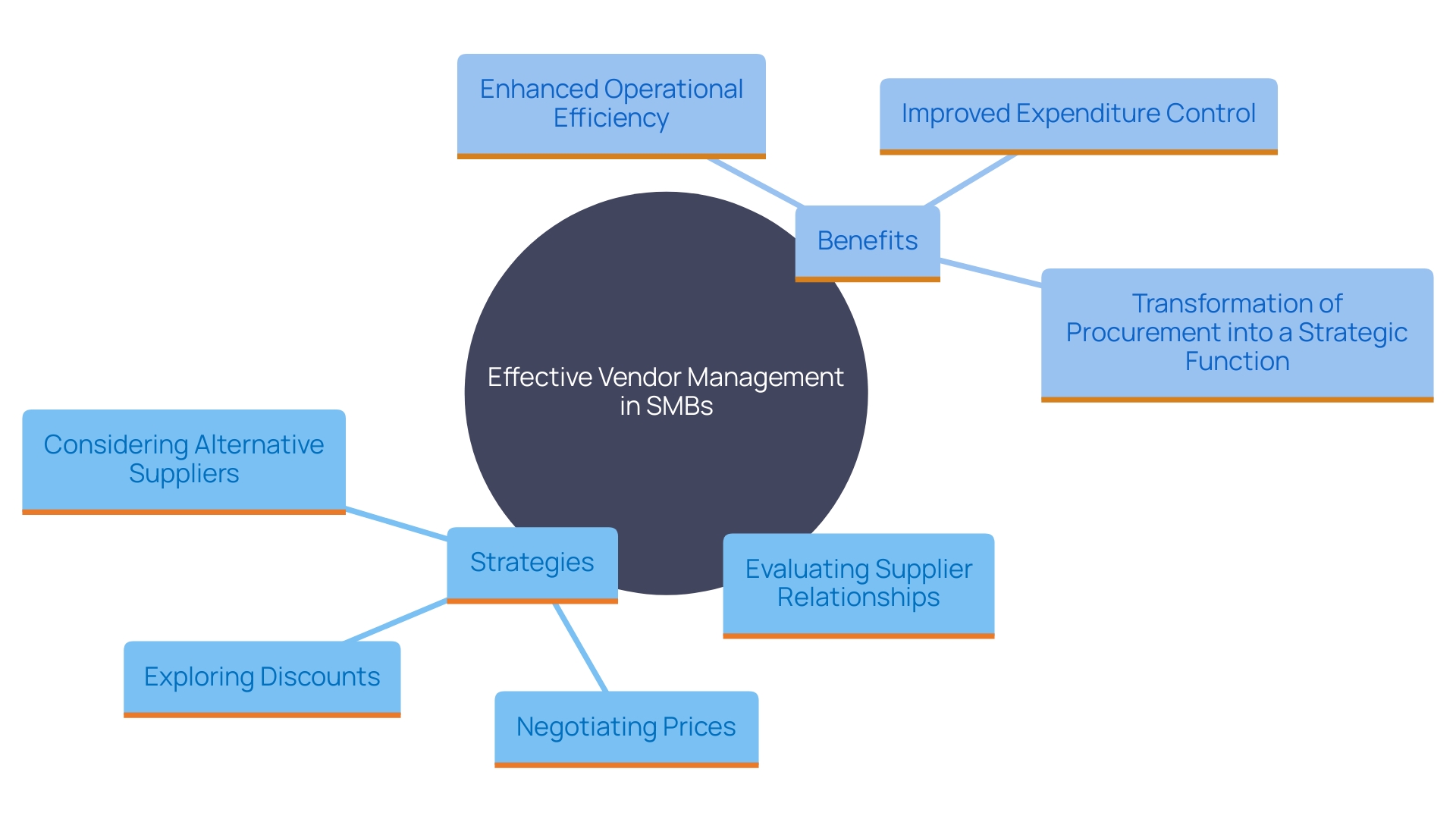
The Role of Employee Involvement and Training
Involving employees in expenditure management initiatives promotes a culture of accountability and innovation. Training personnel on budget management and expense reduction techniques can enable them to spot savings opportunities within their departments. Encouraging feedback and ideas from employees can lead to creative solutions that drive down costs without compromising quality. For instance, implementing eco-friendly cost-reduction strategies can lead to savings and align with social responsibility goals. It's also crucial to assess the simplicity of executing these actions, ensuring they don't heighten risk exposure or result in non-compliance with legal standards.
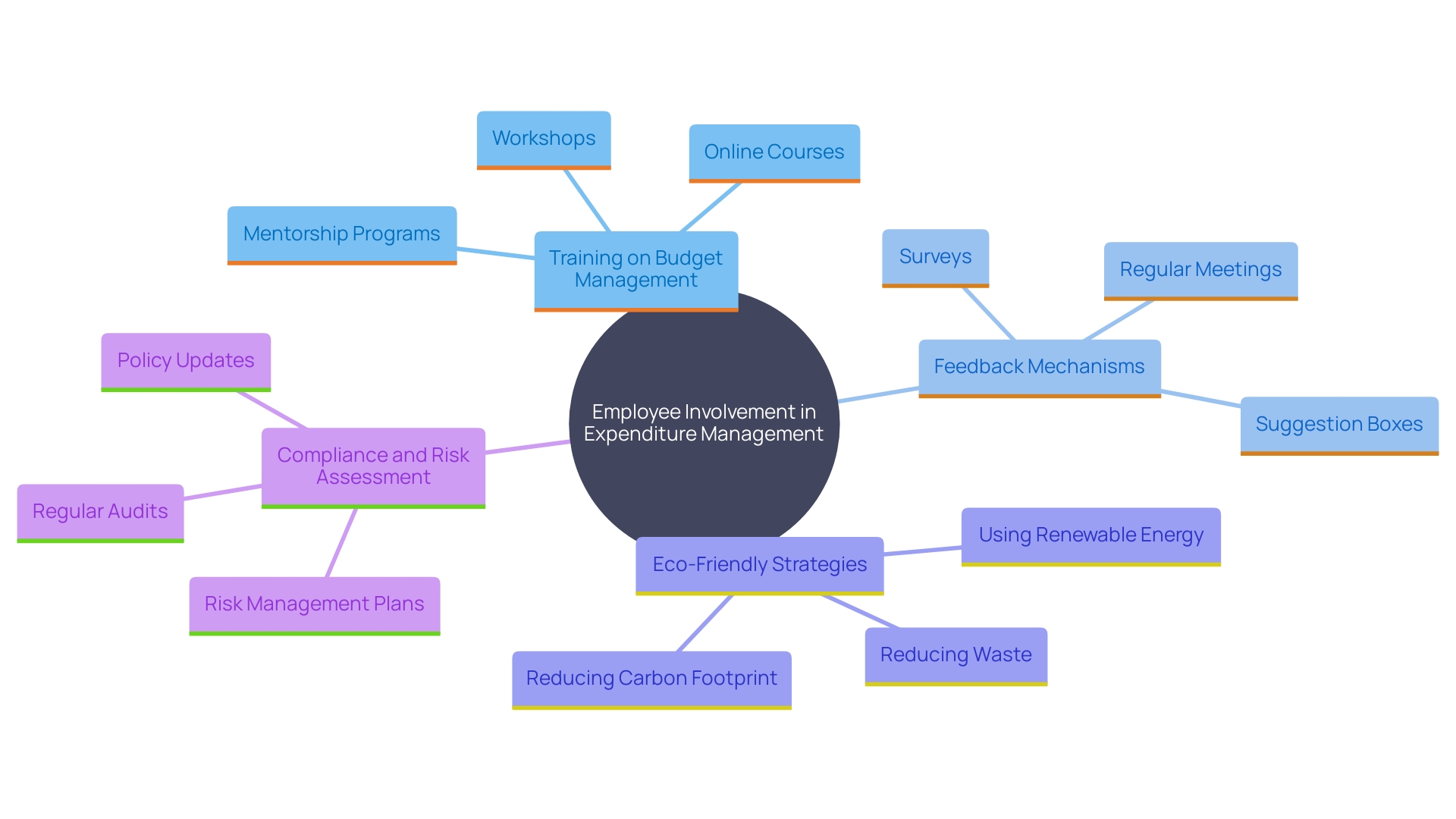
Adapting to Change and Continuous Improvement
Cost control is a continuous endeavor, requiring SMBs to stay agile and responsive to market dynamics. Frequently reviewing expense management strategies and integrating innovative technologies can significantly boost competitiveness. Evaluating the ease of implementation, compliance with regulations, and impact on customer satisfaction is crucial when adopting cost-cutting measures. Implementing environmentally conscious strategies not only lowers expenses but also aligns with societal responsibility objectives. Adopting a mindset of continuous improvement ensures that cost management evolves with organizational growth, securing both immediate and long-term financial stability.
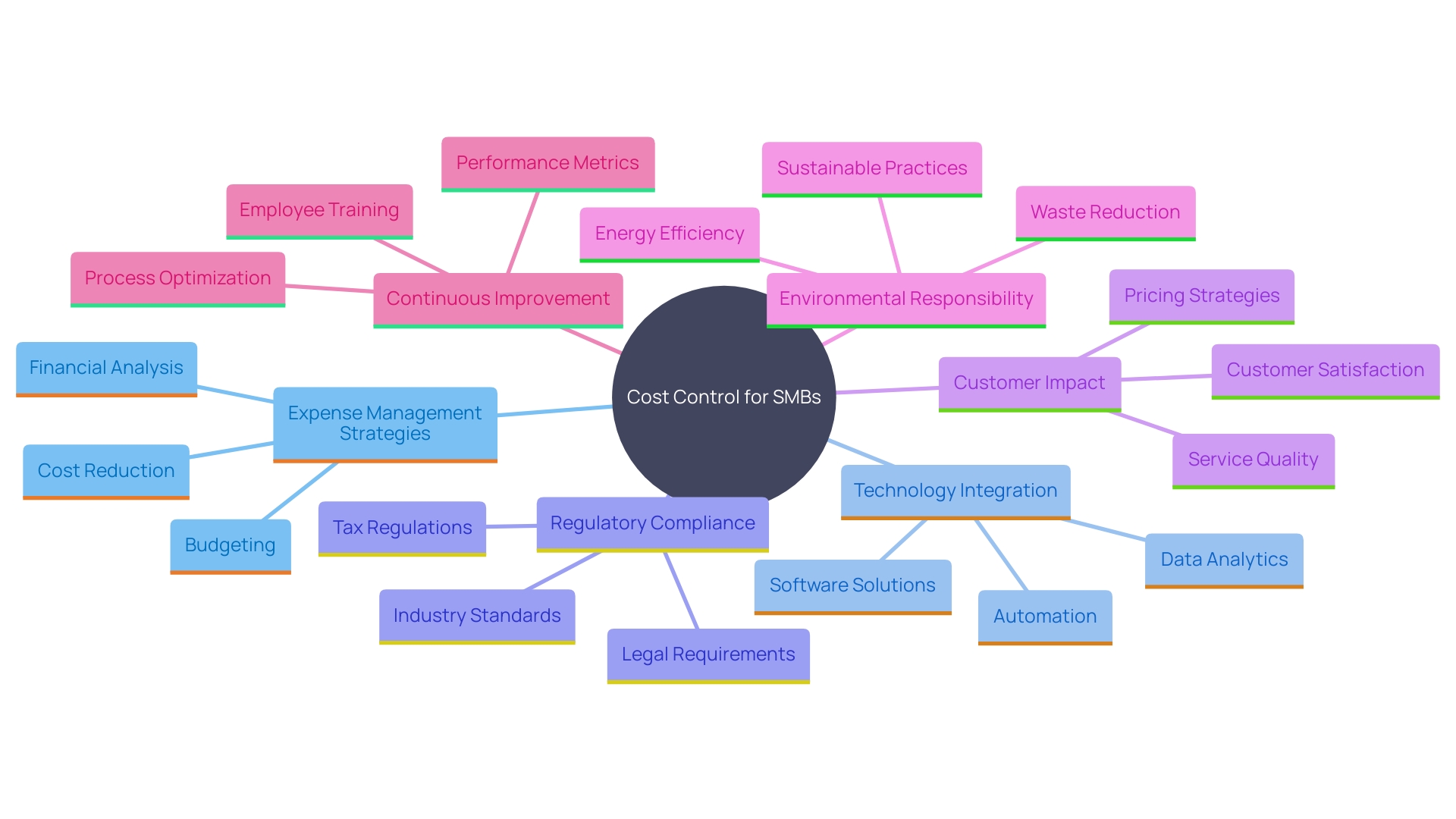
Conclusion
Effective cost control is essential for small to medium businesses (SMBs) striving for growth in competitive markets. Understanding fixed and variable costs helps identify savings opportunities without sacrificing efficiency or quality. Sustainable cost-cutting measures, supported by innovative technology, align financial performance with business objectives, while eco-friendly practices enhance reputation and social responsibility.
A robust cost control strategy begins with assessing current expenses and setting clear goals. Utilizing financial metrics and well-defined budgets enables SMBs to track progress and make informed adjustments. Embracing operational changes and leveraging financial management tools are critical for translating plans into viable outcomes.
Exploring grant opportunities can also provide valuable financial support.
Implementing effective cost control measures includes optimizing procurement and fostering strong vendor relationships. Negotiating better terms and adopting automation can significantly reduce costs while maintaining quality. Engaging employees in cost control initiatives fosters a culture of accountability and innovation, leading to creative solutions and savings.
Continuous evaluation and adaptation of cost control strategies are vital for responding to market dynamics, ensuring competitiveness and financial stability.
In summary, a proactive approach to cost control—emphasizing strategic planning, employee involvement, and ongoing improvement—is crucial for SMBs aiming for long-term success. By focusing on sustainable practices and leveraging technology, businesses can achieve immediate and lasting financial stability while aligning with their core values and operational goals.




